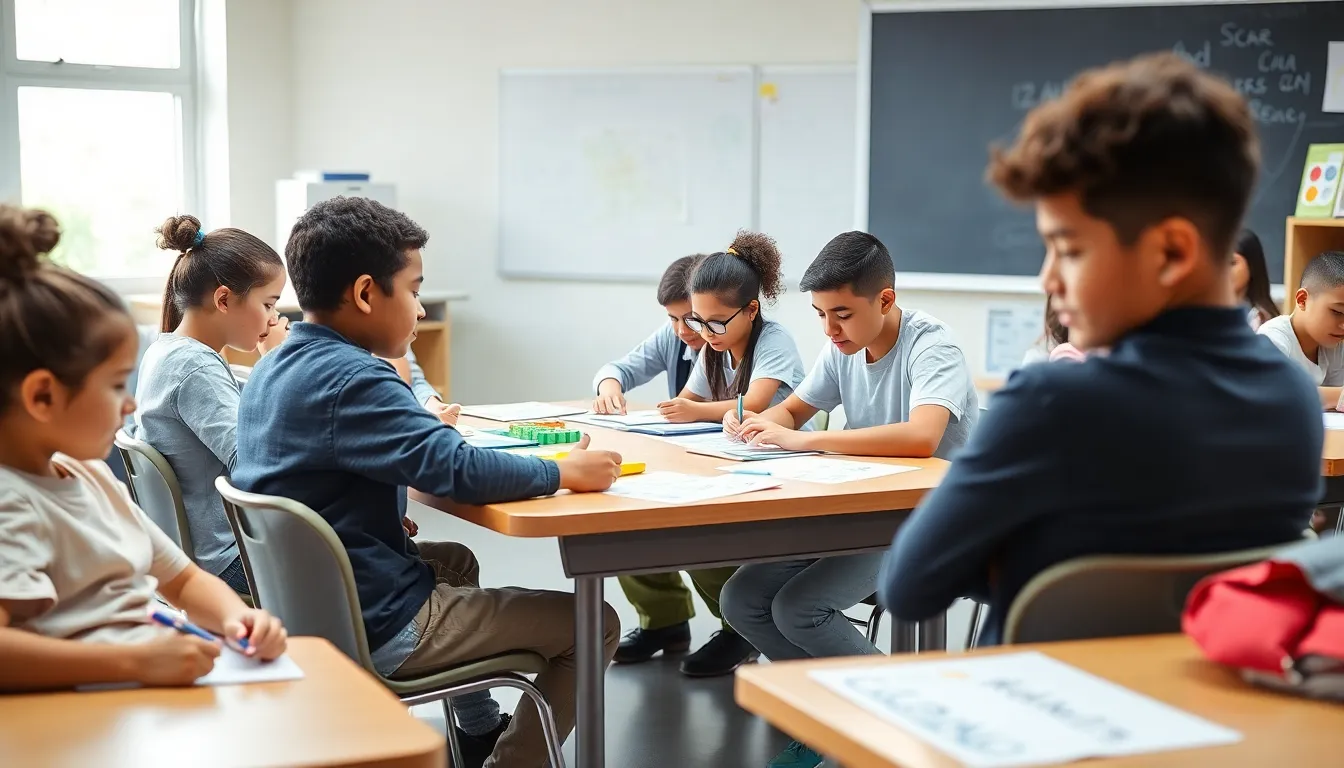Table of Contents
ToggleEvery decision has a consequence, and let’s face it—some are more entertaining than others. Imagine a world where learning from mistakes feels less like a chore and more like a hilarious sitcom episode. Whether it’s that time she thought she could bake a soufflé and ended up with a pancake or when he decided to skip studying for a test thinking he’d wing it, these moments are the real teachers in life.
Understanding Learning Consequences
Every decision brings a set of consequences, shaping personal growth and understanding. Recognizing these outcomes can enhance the learning process in meaningful ways.
Definition of Learning Consequences
Learning consequences refer to the results of decisions made during the educational journey. These outcomes can be positive or negative, impacting both knowledge retention and skill development. For example, a student might grasp a concept fully after making mistakes in practice problems. Alternatively, failing to prepare adequately for a test leads to poor results, reinforcing the need for effective study habits. Understanding these consequences enhances the ability to make informed choices in future learning scenarios.
Importance in Education
Consequences in education play a critical role in shaping student behavior. When learners face the repercussions of their actions, they develop accountability and self-awareness. For instance, students who experience the results of missed deadlines often become more organized in managing their time. Observing how choices affect outcomes prepares learners for real-world situations. This awareness fosters resilience, allowing students to bounce back from setbacks and strive for improvement.
Types of Learning Consequences

Understanding learning consequences helps identify growth opportunities in educational experiences. Both positive and negative outcomes shape learners’ understanding.
Positive Consequences
Positive consequences often enhance knowledge retention. Students who engage in hands-on activities grasp concepts more effectively. They build confidence through successful problem-solving experiences. Mastery of a skill can arise from overcoming initial setbacks, promoting resilience. For instance, learners might excel in mathematical concepts after repeatedly practicing challenging problems. Improved organization follows when students learn to manage their time effectively. Positive reinforcement encourages continued exploration, fostering a love for learning. This cycle of success inspires students to pursue goals with enthusiasm.
Negative Consequences
Negative consequences serve as crucial learning tools. Learners often face setbacks leading to decreased motivation. Poor test results might prompt students to reassess their study habits. Inadequate preparation can result in a lack of understanding, emphasizing the importance of effort. Struggles encountered during difficult tasks teach valuable lessons about perseverance. Students may also develop accountability by recognizing personal responsibility for their outcomes. Ultimately, negative consequences highlight areas for improvement, making them essential in the educational process. They provide insights that lead to meaningful personal growth.
Factors Affecting Learning Consequences
Various elements influence the outcomes of learning experiences. Understanding these factors enhances the educational process.
Individual Differences
Individual differences play a crucial role in learning consequences. Each learner brings unique strengths, weaknesses, and learning styles to the table. For instance, a tactile learner thrives in hands-on environments, while an auditory learner benefits from listening-based activities. Engagement levels also vary; highly motivated students may experience greater positive consequences from their efforts. Conversely, students who struggle with motivation might face negative outcomes, such as poor grades or diminished self-esteem. Psychosocial factors, including emotional intelligence and prior knowledge, further shape learning experiences, affecting retention and application of information.
Environmental Influences
Environmental influences significantly impact learning consequences. Classroom settings, resources, and social interactions create a learning framework. A supportive environment, complete with encouraging teachers and collaborative peers, enhances motivation and knowledge retention. Conversely, an unsupportive atmosphere can lead to disengagement and negative consequences. Classroom design also matters; an organized, resource-rich space promotes active participation. Additionally, external factors such as family dynamics or socioeconomic status can affect educational outcomes. Students from stable home environments typically navigate challenges more effectively, thereby achieving better learning results.
Strategies to Maximize Positive Learning Consequences
Maximizing positive learning consequences requires effective teaching and student engagement techniques. Both factors significantly influence students’ educational experiences.
Effective Teaching Methods
Utilizing diverse instructional strategies boosts knowledge retention. Incorporating project-based learning allows students to apply concepts in real-world scenarios. Demonstrating concepts through visual aids supports different learning styles, enhancing understanding. Personalized feedback encourages students to reflect on their progress, promoting self-awareness. Group work cultivates collaboration and communication skills, enabling peer learning opportunities. These methods create a stimulating environment that fosters a deep love for learning.
Student Engagement Techniques
Active learning techniques capture students’ attention and increase participation. Using multimedia resources appeals to various learning preferences, stimulating interest in academic topics. Gamification transforms lessons into interactive experiences, making learning enjoyable. Encouraging questions creates a dynamic dialogue, fostering critical thinking. Regularly incorporating hands-on activities nurtures curiosity and enhances knowledge retention. These engagement strategies empower students, helping them to take ownership of their education and achieve successful learning outcomes.
Embracing the concept of learning consequences can transform education into a more engaging and meaningful experience. By recognizing that mistakes are not just setbacks but opportunities for growth, students can develop resilience and accountability. Positive outcomes foster enthusiasm for learning while negative consequences encourage self-reflection and improvement.
Understanding individual differences and environmental influences further enhances the educational journey. Tailoring strategies to meet diverse learning styles and creating supportive environments can maximize positive outcomes. Ultimately, cultivating a mindset that values both successes and failures prepares learners for real-world challenges and fosters a continuous love for learning.







